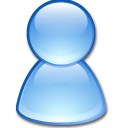Abstract
Two-particle interference is a fundamental feature of quantum mechanics, and is even less intuitive than wave-particle duality for a single particle. In this duality, classical conceptsmdashwave or particlemdashare still referred to, and interference happens in ordinary space-time. On the other hand, two-particle interference takes place in a mathematical space that has no classical counterpart. Entanglement lies at the heart of this interference, as it does in the fundamental tests of quantum mechanics involving the violation of Bell's inequalities. The Hong, Ou and Mandel experiment is a conceptually simpler situation, in which the interference between two-photon amplitudes also leads to behaviour impossible to describe using a simple classical model. Here we report the realization of the Hong, Ou and Mandel experiment using atoms instead of photons. We create a source that emits pairs of atoms, and cause one atom of each pair to enter one of the two input channels of a beam-splitter, and the other atom to enter the other input channel. When the atoms are spatially overlapped so that the two inputs are indistinguishable, the atoms always emerge together in one of the output channels. This result opens the way to testing Bell's inequalities involving mechanical observables of massive particles, such as momentum, using methods inspired by quantum optics, and to testing theories of the quantum-to-classical transition. Our work also demonstrates a new way to benchmark non-classical atom sources that may be of interest for quantum information processing and quantum simulation.
